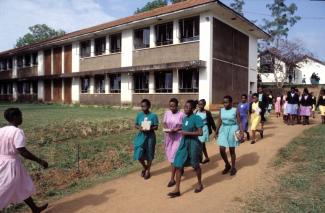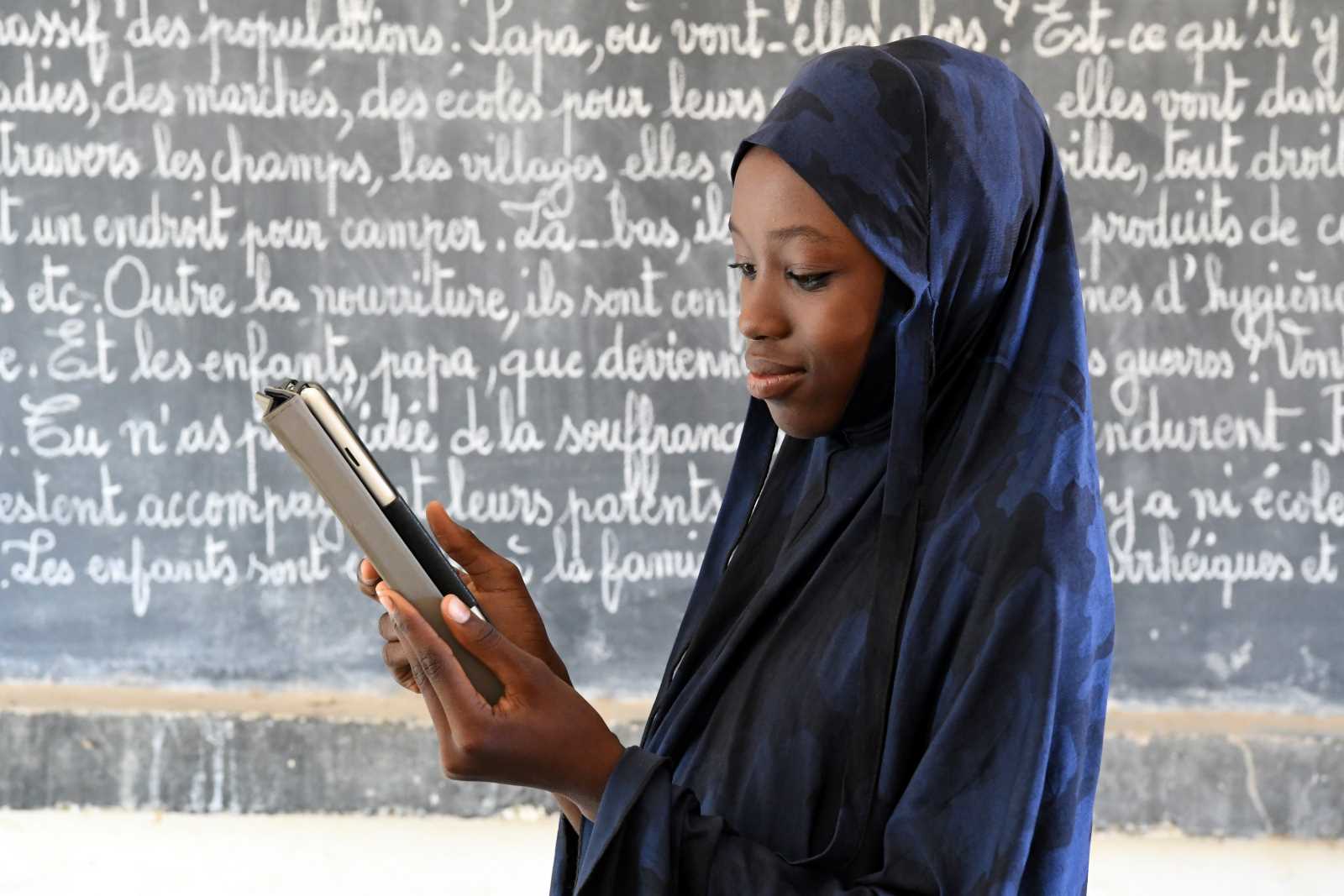Child marriage
Result of poverty

Diana (name changed) seems to have a good life. She is a self-confident young woman who studies at the Uganda Christian University. But the story Diana wants to share is not a happy one. It is hard to believe what this bright and joyful young woman had to go through.
Diana grew up in eastern Uganda, where her mother raised her and her two siblings without any support after her father has left the family. Her mother had inherited some land, but it was taken away by Diana’s uncle (also see article by Gloria Laker Aciro). When Diana was 15 years old, her mother could no longer afford paying her school requirements. So she married her daughter to a 22-year-old school dropout. The bride price consisted of 50,000 Ugandan shillings (about € 13), a cow and a basket of cassava. Her mother exchanged the cow for a piece of land. Diana did not love her husband, but accepted her fate. She worked on community members’ farms and earned 2,000 shillings (about € 0,50) a day while her husband was unemployed.
Soon Diana became pregnant. When the labour started, she was in pain for a week, but no one brought her to hospital. In the second week, she was taken to a health centre where she gave birth to a little boy who died the following day. One week later, Diana was back on the farm working.
She joined a youth group at church and shared her story with a social worker. With her support, Diana started going back to school. But her husband wasn’t happy about it, and he beat her repeatedly. In the end, she returned to find shelter at her mother’s place.
New life
Her mother, however, also disagreed with Diana’s decision to go back to school; she refused to give her daughter a bed – Diana had to sleep on the bare soil – and tried to convince her of returning to her husband: “You have a vagina; therefore you should give birth, rather than going to school,” was one of the nicer sentences Diana was told, and she eventually returned to her husband. When Diana became pregnant again, the birth was induced after one-week labour and a healthy baby girl was born.
Today, Diana is separated from her husband and lives in Kampala, where she is studying with the support of World Vision. Her mother has changed her mind and looks after Diana’s little daughter. Diana now is 22 years old and seems to be better off: “Everybody thinks I have a lot of money, but that’s not true, the scholarship from World Vision only covers university fees and my cost of living. My mother can barely survive from her small piece of land, and when my daughter falls sick, I don’t know how to pay the doctor and medicine.” Diana will keep on struggling. In her experience, there always is some kind of solution.
Dire reality
Diana wants her story to inspire other girls. Child marriage is a reality for many Ugandan girls. According to current UNICEF statistics, 40 % of the women between 20 and 24 years were married before their 18th birthday and 10 % even before they turned 15 years. Uganda’s rate of child marriage is thus above the African average of 39 %.
Prevalence is highest in northern Uganda (59 %), followed by the west (58 %) and east (52 %). According to several studies, including the African Human Social Development Report (2013), countries with high rates of child marriage also have the highest rates for maternal mortality, pregnancies and HIV/AIDS infections.
Child marriage happens to both sexes, but mainly affects girls. Girl brides and their families are often trapped in a vicious cycle of poverty. Poor parents mostly marry their daughters “off” early because they want to reduce family expenses. Girls who marry young typically drop out of school without even completing the primary cycle. They do not get chance to gain necessary knowledge and skills which could help them and their families to escape poverty.
The girls give birth earl,y and their children are at risk of suffering the same fate. Teenage brides are thus more likely to be poor and stay poor. Much too young to be ready for marriage and pregnancy, these girls are more often victims of domestic violence and serious complications during pregnancy and childbirth.
Diana was lucky because her prolonged labour contractions did not cause permanent damage in form of an obstetric fistula, as often happens. During prolonged, obstructed labour, the sustained pressure of the baby’s head on the mother’s pelvic bone can harm soft tissues, creating a hole, or fistula, between the vagina and the bladder and/or rectum. The women concerned suffer from persistent incontinence and are excluded from social life. Uganda has been reported to have the third-highest rate of fistula in the world.
Many reasons
Under-age marriage has many causes in Uganda. Mainly, it results from poverty and girls’ only limited access to education. According to traditional and social norms, moreover, a girl should be married at a young age in order to fulfil duties as a wife and mother.
But not every girl is forced into marriage as Diana. Some girls choose to marry early because they have difficulties following lessons in schools, where classes usually exceed 100 students. Others are abused at home.
It is common in rural Uganda for young men who are looking for a bride to wait for girls on their way home from school; they make promises or hand out sweets. The prospect of a future with regular meals is often attractive, especially as many girls do not get lunch at school and go home hungry. Marriage does not seem bad. The disappointment is great when the girls realise they have to work as much as at their parents’ home without any support from their husbands. One downside of the bride price, moreover, is that husbands feel they own their wives and expect them to fulfil their wishes obediently.
Agnes (not her real name) is now 17 and married at 14. She regrets her choice: “I wish I hadn’t married and given birth at this age, all my opportunities were buried. I’m still wedged in poverty. I advise all the teenage girls out there to be patient despite of all the hardships they go through.”
Moreover, it is quite common that a girl who has been raped is married to her violator. Families, the police and local authorities often consider this to be the best solution for everyone – and the rape victims do not get a say in the matter. The government has only recently begun to take the issue of child marriage seriously, and civil-society organisations support its efforts (see box).
Officially, the Ugandan constitution of 1995 declares 18 to be the legal age of marriage. However, the relevant laws have not been enforced stringently, and according to religious norms and traditions, marriage is possible once puberty has started.
Angelina Diesch is a social worker who volunteers at the NGO Joy for Children Uganda in Kampala.
angelina@joyforchildren.org
Moses Ntenga is the Executive Director of Joy for Children Uganda.
Links
Girls Not Brides:
http://www.girlsnotbrides.org
Joy for Children:
http://www.joyforchildren.org














